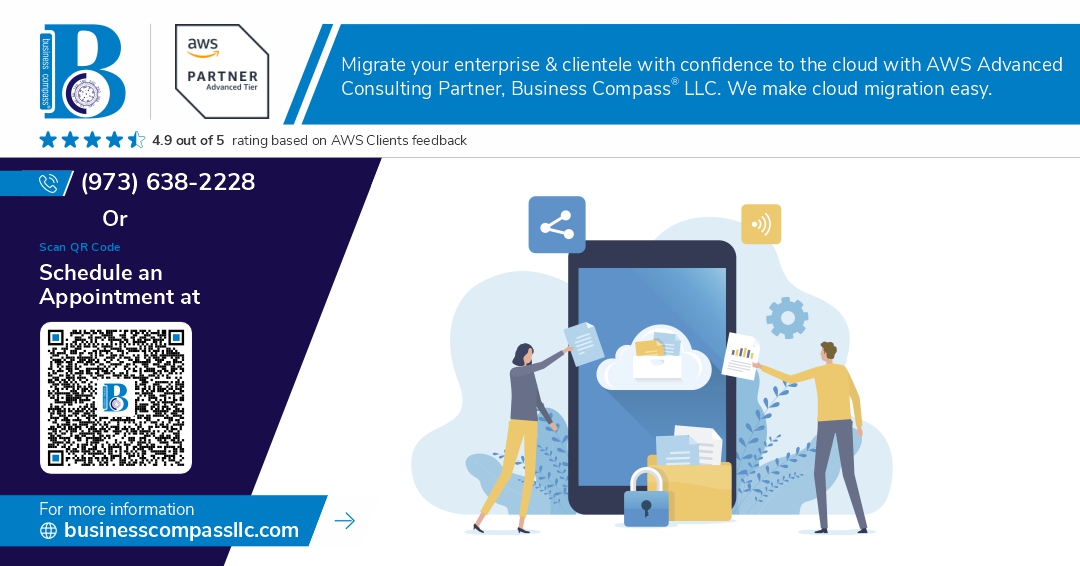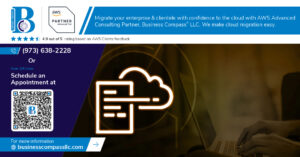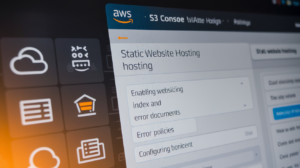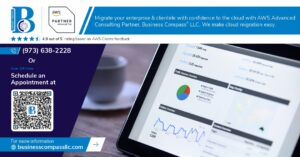Are you struggling to build scalable enterprise applications that can keep up with your business growth? 🏗️ Enter Service-Oriented Architecture (SOA) – the game-changing approach that’s revolutionizing how we design and develop robust, flexible software systems.
In today’s fast-paced digital landscape, traditional monolithic architectures are crumbling under the weight of complex business requirements and ever-increasing data loads. SOA offers a breath of fresh air, promising modularity, reusability, and seamless integration across your entire enterprise ecosystem. But what exactly is SOA, and how can it transform your application development process?
In this comprehensive guide, we’ll dive deep into the world of Service-Oriented Architecture, exploring its core principles, building blocks, and real-world applications. From understanding the fundamentals to implementing SOA in enterprise environments, we’ll equip you with the knowledge and insights needed to harness the power of this innovative architectural paradigm. So, buckle up as we embark on a journey to unlock the secrets of building truly scalable enterprise apps with SOA! 🚀
Understanding Service-Oriented Architecture (SOA)
A. Definition and core principles of SOA
Service-Oriented Architecture (SOA) is an architectural approach that structures software systems as a collection of loosely coupled, interoperable services. The core principles of SOA include:
- Service abstraction
- Service reusability
- Service autonomy
- Service discoverability
- Service composability
These principles enable organizations to build flexible, scalable, and maintainable enterprise applications.
B. Key components of SOA
The key components of SOA form the foundation for building robust enterprise applications:
| Component | Description |
|---|---|
| Services | Self-contained units of functionality |
| Service Registry | Repository for service descriptions |
| Service Bus | Middleware for communication between services |
| Service Contracts | Specifications for service interaction |
| Service Consumers | Applications or systems that use services |
C. Benefits of implementing SOA
Implementing SOA offers numerous advantages for enterprise applications:
- Improved agility and flexibility
- Enhanced scalability
- Increased reusability of services
- Better alignment with business processes
- Simplified integration of legacy systems
- Reduced development costs and time-to-market
D. How SOA differs from other architectural styles
SOA distinguishes itself from other architectural styles in several ways:
- Loose coupling: Services are independent and can be easily replaced or upgraded
- Technology-agnostic: Services can be implemented using different technologies
- Business-driven: SOA aligns closely with business processes and goals
- Standardized communication: Services interact using standardized protocols
Now that we have a solid understanding of SOA’s fundamentals, let’s explore the building blocks that make up this powerful architectural approach.
Building Blocks of SOA
Services: The foundation of SOA
Services are the cornerstone of Service-Oriented Architecture (SOA), providing modular, reusable components that encapsulate specific business functionalities. These services can be classified into three main types:
- Business services
- Application services
- Infrastructure services
| Service Type | Description | Example |
|---|---|---|
| Business | Represent core business operations | Payment processing |
| Application | Support business processes | Data validation |
| Infrastructure | Provide technical capabilities | Network security |
Service contracts and interfaces
Service contracts define the terms of interaction between services, specifying:
- Input/output parameters
- Supported operations
- Quality of service expectations
Interfaces act as the entry point for service consumers, abstracting the underlying implementation details.
Service registry and discovery
A service registry is a centralized repository that stores information about available services, including:
- Service descriptions
- Metadata
- Location information
Service discovery mechanisms allow consumers to locate and invoke services dynamically, promoting flexibility and loose coupling.
Enterprise Service Bus (ESB)
The Enterprise Service Bus serves as a communication backbone in SOA, facilitating:
- Message routing
- Protocol translation
- Data transformation
ESBs enable seamless integration between heterogeneous systems and services, enhancing interoperability across the enterprise.
Orchestration and choreography
Orchestration and choreography are essential for coordinating service interactions:
- Orchestration: Centralized control of service workflows
- Choreography: Decentralized coordination of service interactions
These mechanisms ensure efficient execution of complex business processes by managing the flow of data and control between services.
Now that we’ve explored the building blocks of SOA, let’s delve into designing scalable enterprise applications using these components.
Designing Scalable Enterprise Apps with SOA
Modular approach to application development
In Service-Oriented Architecture (SOA), a modular approach is key to building scalable enterprise applications. This method involves breaking down complex systems into smaller, manageable components called services. Each service performs a specific function and can be developed, deployed, and maintained independently.
Benefits of modular development in SOA:
- Easier maintenance
- Faster development cycles
- Improved fault isolation
- Enhanced flexibility
| Traditional Approach | SOA Modular Approach |
|---|---|
| Monolithic structure | Loosely coupled services |
| Tightly integrated components | Independent, reusable modules |
| Difficult to scale | Easily scalable |
| Complex maintenance | Simplified maintenance |
Loose coupling and high cohesion
Loose coupling ensures that services are independent and can communicate through well-defined interfaces. This reduces dependencies between components, making the system more flexible and easier to modify. High cohesion means that each service focuses on a specific task, promoting better organization and maintainability.
Reusability and composability of services
SOA promotes the creation of reusable services that can be combined to form new applications. This composability allows organizations to rapidly develop new solutions by leveraging existing services, reducing development time and costs.
Scalability through distributed computing
SOA enables scalability by distributing services across multiple servers or even geographical locations. This approach allows enterprises to handle increased workloads by adding more resources or optimizing existing ones. Distributed computing in SOA also improves fault tolerance and system availability.
Implementing SOA in Enterprise Environments
SOA governance and best practices
Implementing SOA in enterprise environments requires a robust governance framework and adherence to best practices. Here are key considerations:
-
Establish a clear SOA governance model:
- Define roles and responsibilities
- Create service lifecycle management processes
- Implement service registry and repository
-
Enforce standardization:
- Develop service design guidelines
- Implement consistent naming conventions
- Establish service level agreements (SLAs)
| Best Practice | Description |
|---|---|
| Service Reusability | Design services for maximum reuse across the organization |
| Loose Coupling | Minimize dependencies between services for flexibility |
| Service Abstraction | Hide service logic from the outside world |
| Service Discoverability | Ensure services can be easily found and understood |
Choosing the right technologies and protocols
Selecting appropriate technologies and protocols is crucial for successful SOA implementation:
- Web Services: SOAP, REST, or GraphQL
- Enterprise Service Bus (ESB) for message routing and transformation
- Service registries like UDDI or Apache ZooKeeper
- Messaging protocols: AMQP, MQTT for asynchronous communication
Consider factors such as scalability, performance, and interoperability when making technology choices.
Integration with existing systems
Integrating SOA with legacy systems requires careful planning:
- Identify integration points
- Create service wrappers for legacy applications
- Use adapters or connectors for seamless communication
- Implement data transformation services
Security considerations in SOA
Ensure robust security measures in your SOA implementation:
- Implement strong authentication and authorization mechanisms
- Use encryption for data in transit and at rest
- Apply security standards like WS-Security for web services
- Regularly conduct security audits and penetration testing
By addressing these aspects, enterprises can successfully implement SOA and reap its benefits in building scalable applications.
Challenges and Solutions in SOA Adoption
Common pitfalls in SOA implementation
When adopting Service-Oriented Architecture (SOA), organizations often encounter several challenges. Here are some common pitfalls to watch out for:
- Lack of clear governance
- Inadequate service design
- Insufficient testing
- Poor security measures
| Pitfall | Description | Solution |
|---|---|---|
| Lack of clear governance | No standardized processes for service creation and management | Establish a robust governance framework |
| Inadequate service design | Services that are too fine-grained or too coarse-grained | Focus on proper service granularity and reusability |
| Insufficient testing | Inadequate testing of services and their interactions | Implement comprehensive testing strategies |
| Poor security measures | Weak security protocols for service communication | Enforce strong authentication and encryption |
Overcoming organizational resistance
Resistance to change is a significant hurdle in SOA adoption. To address this:
- Educate stakeholders about SOA benefits
- Involve key personnel in the decision-making process
- Provide comprehensive training programs
- Demonstrate quick wins to build confidence
Addressing performance issues
Performance concerns are common in SOA implementations. To mitigate these:
- Optimize service communication protocols
- Implement caching mechanisms
- Use asynchronous processing where appropriate
- Monitor and tune service performance regularly
Ensuring service availability and reliability
Maintaining high availability and reliability is crucial for SOA success. Strategies include:
- Implementing robust failover mechanisms
- Utilizing load balancing techniques
- Designing for fault tolerance
- Conducting regular health checks and monitoring
By addressing these challenges head-on, organizations can significantly improve their chances of successful SOA adoption. Next, we’ll explore real-world success stories that demonstrate the power of well-implemented SOA in enterprise environments.
Real-world SOA Success Stories
Case studies from various industries
Service-Oriented Architecture (SOA) has been successfully implemented across various industries, delivering significant benefits to organizations. Let’s explore some notable case studies:
-
Financial Services: Bank of America
- Implemented SOA to streamline operations
- Reduced time-to-market for new products by 50%
- Improved customer satisfaction by 30%
-
Healthcare: Kaiser Permanente
- Developed a comprehensive electronic health record system
- Achieved 95% reduction in medication errors
- Reduced patient wait times by 40%
-
Retail: Amazon
- Utilized SOA to create a flexible e-commerce platform
- Increased scalability to handle millions of transactions
- Improved third-party integration capabilities
| Industry | Company | Key Benefit |
|---|---|---|
| Financial | Bank of America | 50% faster product launches |
| Healthcare | Kaiser Permanente | 95% reduction in medication errors |
| Retail | Amazon | Improved scalability and integration |
Measurable benefits and ROI
The implementation of SOA has yielded substantial returns on investment (ROI) for many organizations:
-
Cost Reduction:
- Average 25-30% reduction in IT infrastructure costs
- 20-40% decrease in application development and maintenance expenses
-
Increased Efficiency:
- 30-50% improvement in business process execution times
- 40-60% reduction in time-to-market for new products and services
-
Enhanced Agility:
- 50-70% increase in reuse of existing services
- 35-45% reduction in time required for system integration
Lessons learned from successful implementations
Organizations that have successfully adopted SOA share several key insights:
- Start with a clear business strategy and align SOA initiatives accordingly
- Prioritize governance and establish strong leadership support
- Focus on creating reusable services that deliver tangible business value
- Invest in proper training and change management to ensure smooth adoption
- Continuously monitor and measure performance to drive ongoing improvements
By learning from these success stories and applying best practices, organizations can maximize the benefits of SOA implementation and achieve significant improvements in their enterprise applications.
Future Trends in SOA
Microservices and their relationship with SOA
Microservices architecture has emerged as a natural evolution of SOA principles. While both approaches share similarities, microservices offer finer-grained service decomposition and greater autonomy. Here’s a comparison:
| Aspect | SOA | Microservices |
|---|---|---|
| Service Size | Larger, coarse-grained | Smaller, fine-grained |
| Coupling | Loosely coupled | Highly decoupled |
| Data Management | Shared data stores | Independent databases |
| Deployment | Often monolithic | Independently deployable |
Cloud-native SOA implementations
Cloud-native SOA leverages cloud computing capabilities to enhance scalability and flexibility. Key features include:
- Containerization (e.g., Docker)
- Orchestration platforms (e.g., Kubernetes)
- Serverless computing
- API gateways for service management
AI and machine learning in service-oriented systems
AI and ML are revolutionizing SOA by:
- Enhancing service discovery and composition
- Improving predictive maintenance
- Optimizing resource allocation
- Enabling intelligent routing and load balancing
The role of SOA in digital transformation
SOA continues to play a crucial role in digital transformation initiatives:
- Facilitating legacy system modernization
- Enabling rapid integration of new technologies
- Supporting omnichannel experiences
- Fostering innovation through modular architectures
As organizations embrace digital transformation, SOA principles provide a solid foundation for building agile, scalable, and adaptable enterprise applications.
Service-Oriented Architecture (SOA) has proven to be a powerful approach for building scalable enterprise applications. By breaking down complex systems into modular, reusable services, organizations can achieve greater flexibility, improved efficiency, and enhanced adaptability to changing business needs. From understanding the core concepts to implementing SOA in enterprise environments, this approach offers numerous benefits for businesses looking to stay competitive in today’s rapidly evolving digital landscape.
As we look to the future, SOA continues to evolve and adapt to new technologies and methodologies. By embracing SOA principles and best practices, organizations can position themselves for long-term success, enabling them to build robust, scalable, and agile enterprise applications that can meet the demands of tomorrow’s business challenges. Whether you’re just starting your SOA journey or looking to optimize your existing architecture, the insights shared in this post provide a solid foundation for leveraging the power of service-oriented design in your enterprise applications.




















